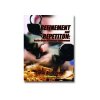Hk Dan is spot on - 9PDs on stage 3 is excellent. Many lose multiples of that, and it's a real killer.
Sam's advice is spot on too, IMO. "Shoot slow, move fast" is far more effective than the opposite, which many seem to do.
Consider this: A very good shooter can shoot a 12-round stage with movement at about par (12 seconds). If there's no movement involved (e.g. El Prez), the same shooter will likely shoot it in 7.5 seconds or better. That extra 4.5 seconds is movement. Do the math, and you'll see movement accounts for almost 40% of the typical stage time, so after basic gun handling skills, efficiency in movement (while getting your hits) is where the low hanging fruit is (btw, next highest fruit, IMO, are transitions & faster reloads; note that a speedy draw and splits aren't listed - they come with time, and contribute relatively little to your placing until much later).
Sam1911 said:
However, it is a good idea as there is a bit of a game advantage to the tac load on string 2 of stage 3. You cannot leave cover until your reload is complete. However, your reload is complete once the mag is seated and the slide is closed. While you can't FIRE until you get that spent mag stowed, you can MOVE. So, fire your first six, tac load, break cover, and get your mag stowed while you're moving up to the barrel. If you can remember to do it, you'll save a part of a second or so over the R-W-R where you've got to finish all the steps before you can move.
Good advice. If you're not...um..."circumferentially challenged",
Sevigny's reload (at 0:55) seems like another good alternative.
IDPA is a bit of a transition from just standing still and squeezing the trigger at a bullseye.
Yes, it is. We've all been there. For some perspective, I did just that (informal target shooting at my own pace) before competing. It really helped with the fundamentals. Then I started shooting ICORE, IDPA & USPSA, and my eyes really opened up. But there's good news - if you make it a goal to apply the fundamentals better and faster every time you shoot (and be patient with yourself), you'll improve quickly.
For some perspective, I took 3rd Master at IDPA Worlds (a few weeks ago) in my 2nd year of competition. But for a very expensive miss on...you guessed it...stage 3, I would've classified as a Master 9 months after starting as a novice. The points I'm trying to make are 1) practice, patience, and a little instruction will take you far, and 2) never abandon the fundamentals.
I wish you good shooting!




